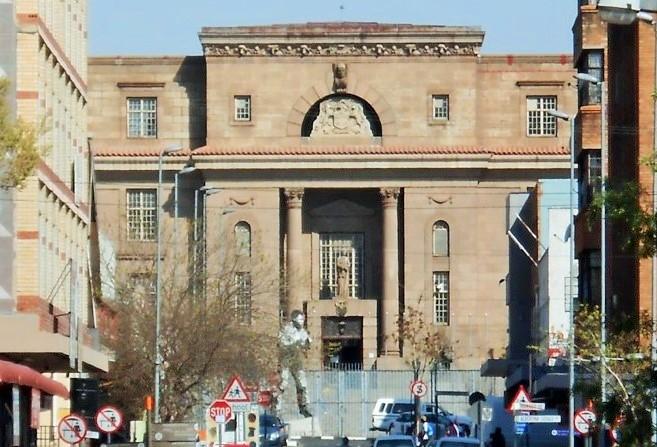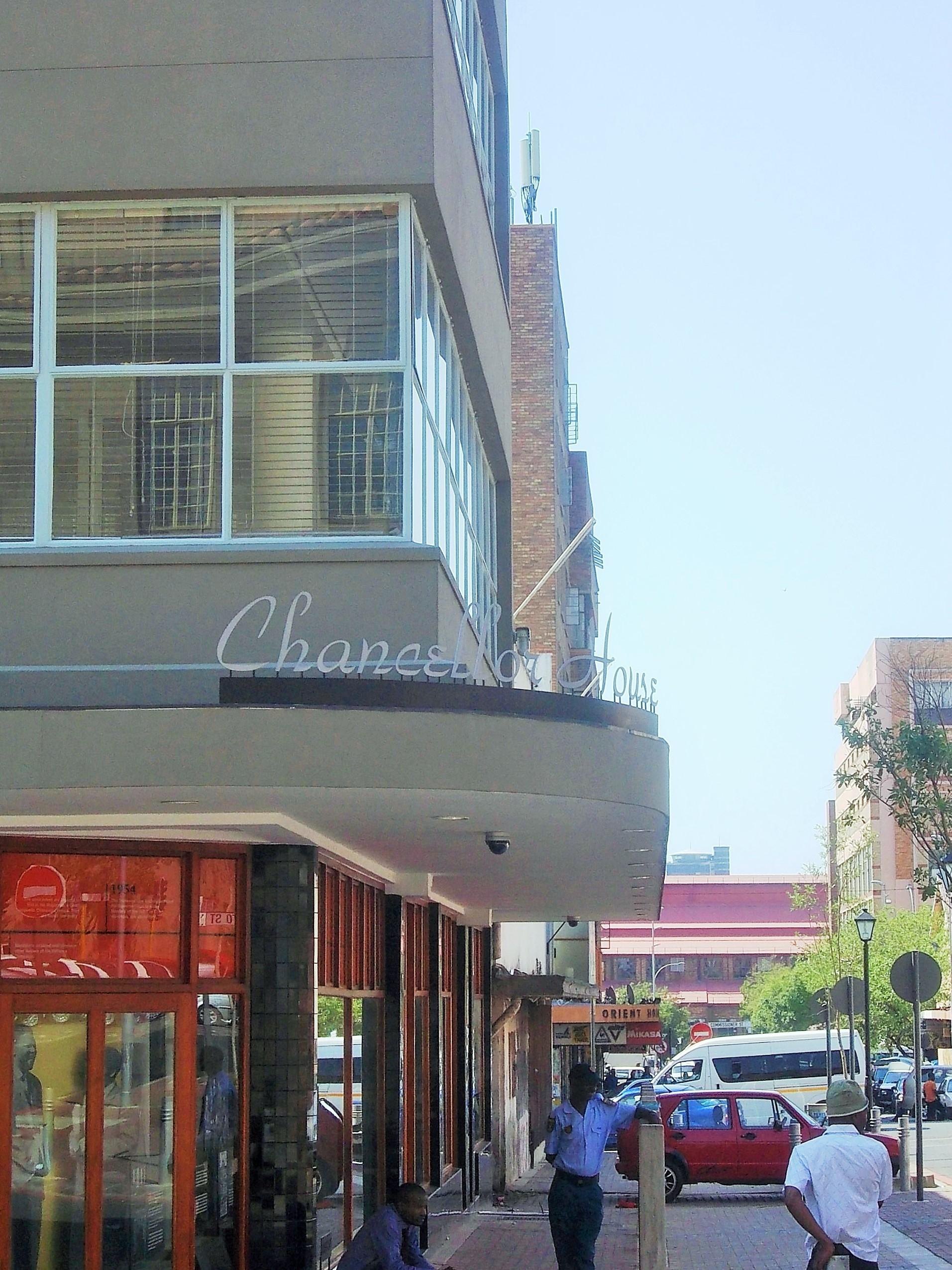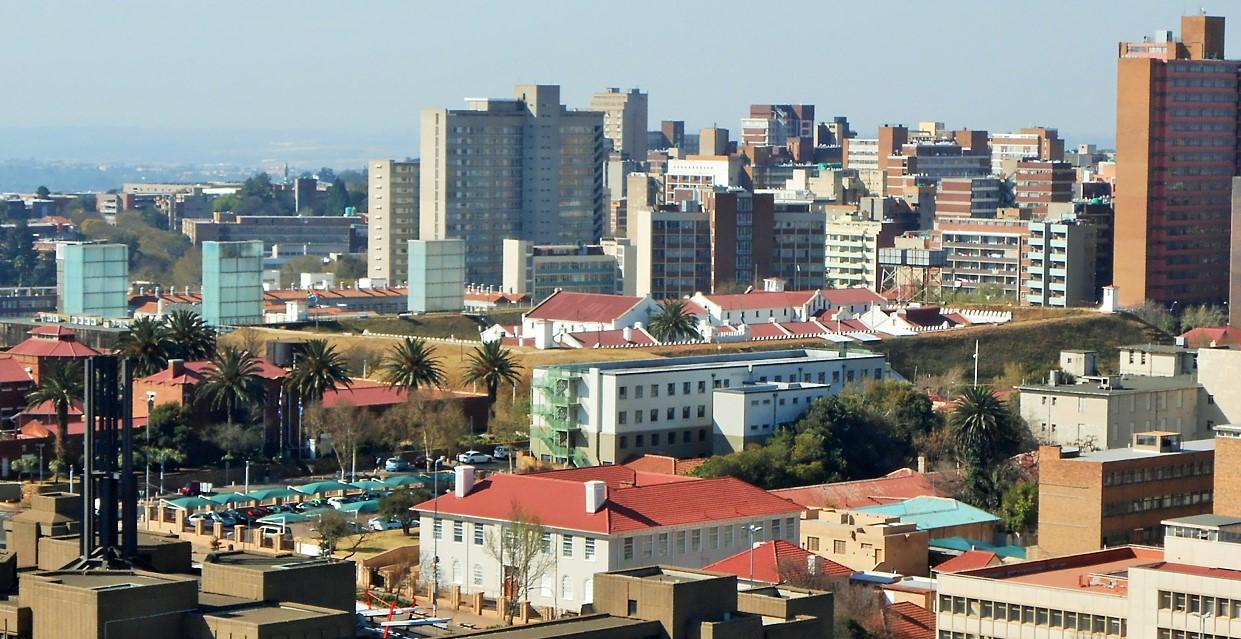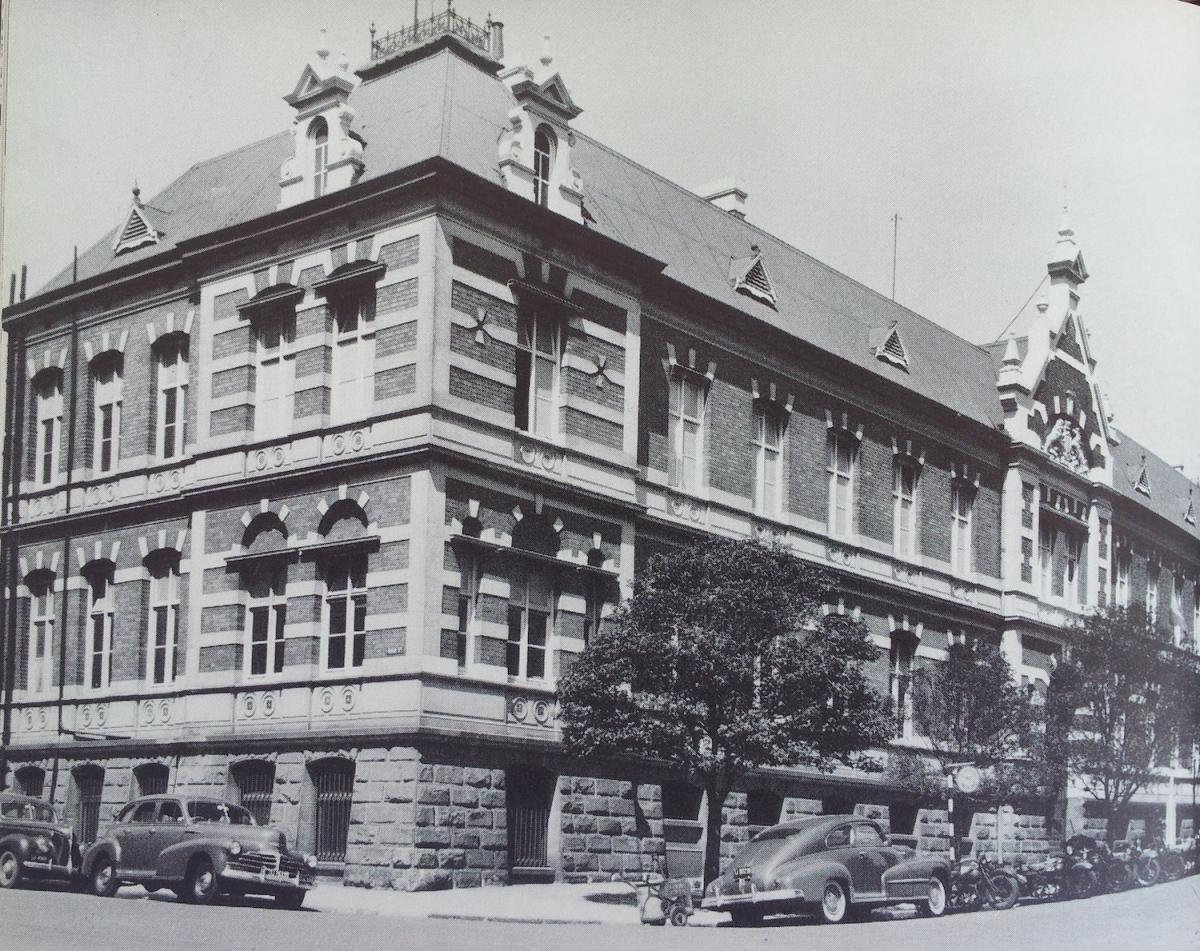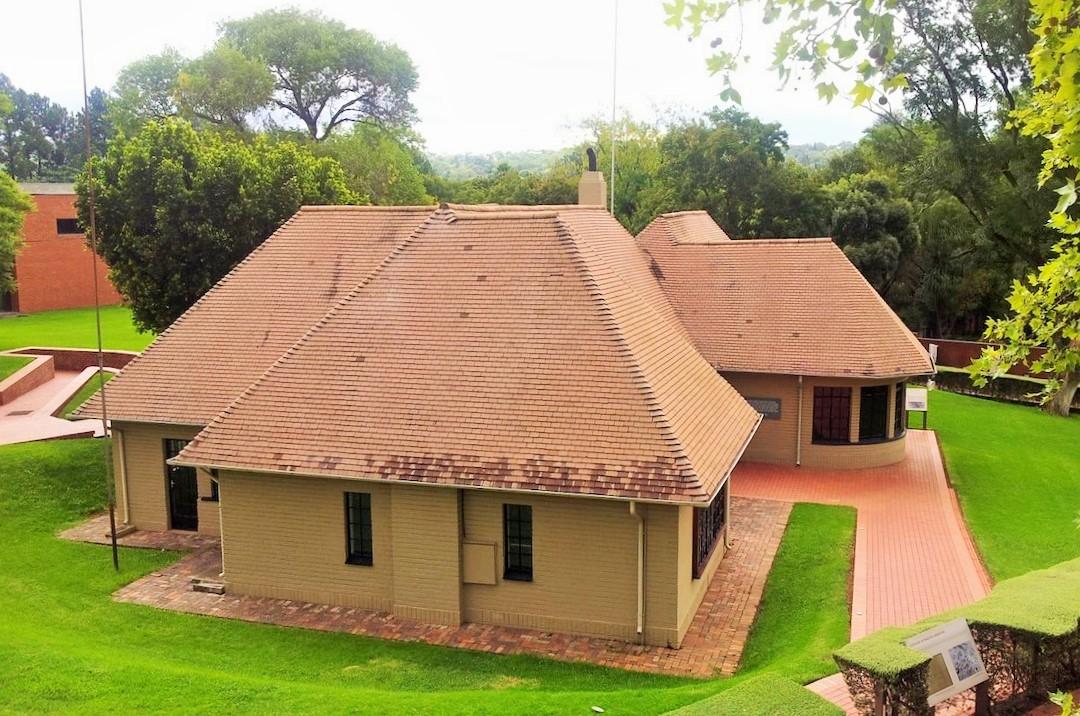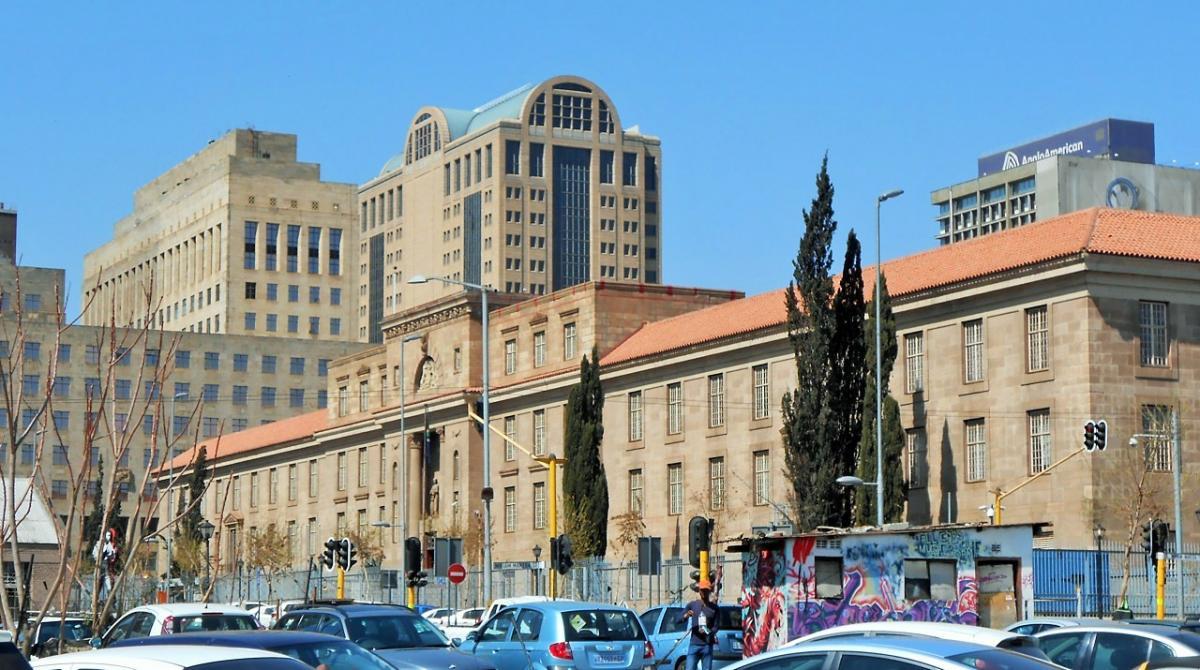
Disclaimer: Any views expressed by individuals and organisations are their own and do not in any way represent the views of The Heritage Portal. If you find any mistakes or historical inaccuracies, please contact the editor.
Gandhi and Mandela both began their crusades against injustice in Johannesburg, a city where historic buildings and places still map their journeys towards liberation. Half a century before the young Mandela's political history began in earnest, Gandhi launched his struggle, developing his technique of satyagraha (passive resistance or 'truth force'). Both men started out as lawyers for the downtrodden.
Gandhi became Johannesburg's first Indian attorney in 1903, establishing his law practice at the corner of Rissik and Anderson streets, opposite the courts. His offices soon became a haven for victims of discrimination, with a series of anti-Indian laws bringing many desperate clients to his doors.
A few blocks away and some 50 years later, Mandela and his friend Oliver Tambo opened their law firm in 1952. Their partnership was South Africa's only firm of African lawyers at that time, making them the first and last resort for countless victims of apartheid.
"To reach our desks each morning," Tambo recalled, "Nelson and I ran the gauntlet of patient queues of people overflowing from the chairs in the waiting room into the corridors. Every case in court, every visit to prisons to interview clients reminded us of the humiliation and suffering burning into our people."
Gandhi's offices were in Court Chambers, which derived their name from the law courts across the road. The building was ideally placed for lawyers' offices. The High Court and old Magistrate's Courts were located in Government Square (now Gandhi Square), at the southern end of Rissik Street. The old Magistrate's Courts were later replaced by the present ones on the western edge of town. Built in 1940 across four city blocks and enclosing 8km of passages, it was a monument to white power.
The Magistrate's Court (The Heritage Portal)
Overshadowed by the courthouse, a small Indian-owned building across the road was easily overlooked. But it was here, in the unassuming Chancellor House, facing onto the statues of justice at the court entrance, that the firm of Mandela and Tambo set up chambers, in Fox Street.
Chancellor House (The Heritage Portal)
In the courts, Gandhi and Mandela experienced both sides of the dock, appearing first as attorneys and then as defendants in political trials.
Gandhi was first put on trial with 26 of his comrades and charged with refusing to register for the pass which all Indians were required to carry. The court ordered Gandhi out of the Transvaal, but he refused to budge and was soon summoned back for a second trial. Packed inside the courtroom were hundreds of Indians as well as Gandhi’s fellow members of the Bar.
"I had some slight feeling of awkwardness," Gandhi recalled, "that I was standing as an accused in the very court where I had often appeared as counsel. But I well remember that I considered the former role as far more honourable than the latter, and did not feel the slightest hesitation in entering the prisoner's box."
Compare this with Mandela's statement from the dock in 1962: "I was made, by the law, a criminal, not because of what I had done, but because of what I stood for, because of what I thought, because of my conscience."
Gandhi served his first prison sentence at Johannesburg's old Fort, a grim late-19th-century jail, where black prisoners were segregated from white convicts, and Indian passive resisters were herded into the ""native"" cell block, the notoriously harsh and overcrowded Section 4.
Like Gandhi before him, Mandela served time at the Fort. Booked in as an awaiting-trial prisoner in 1962, he was assigned to the prison hospital. This was not because he was ill but because the warders feared he might escape, or that his ANC comrades might try to spring him from jail, and the hospital was the most secure place in the prison, surrounded by two massive walls, each with armed guards, and four huge gates inside.
Old Fort from above (The Heritage Portal)
Gandhi and Mandela each went on to spend inordinate amounts of time behind bars, becoming among the world's best-known political prisoners. Mandela was incarcerated for 27 years. Gandhi, forever in and out of prisons in South Africa and India, spent at least 2338 days in jail. It goes without saying that prison conditions were tough for both men.
"There is a great similarity," Mandela noted, "in the conditions of imprisonment during our days and Gandhi's. Prison conditions changed dramatically only in the 1980s, despite the pressures exerted at the beginning of the century by Gandhi and his colleagues, and in the latter decades by my colleagues and myself." Not only did the basic prison diet remain unchanged over the years, but Mandela's convict uniform in 1962 was almost identical to Gandhi's in 1908.
"After being stripped we were given prison uniforms," Gandhi recorded. "We were supplied each with a pair of short breeches, a shirt of coarse cloth, a jumper, a cap, a towel and a pair of socks and sandals." It may surprise many people to learn that the famous Gandhi cap worn in India is a khadi replica of the prison cap worn by all black convicts in South Africa in the early days.
Though they were political prisoners, neither could avoid mixing with hardened criminals at the Fort. On one occasion Gandhi was assaulted in a lavatory. The toilets were without doors. A heavily built and fearsome-looking prisoner demanded that Gandhi leave the toilet, shouting a torrent of abuse at him. Gandhi hardly had time to say that he would leave soon before he was lifted up and hurled out.
Mandela had an unnerving experience of his own with a member of Soweto's much feared Msomi gang, a prisoner named Nkadimeng whom Mandela suspected of being a police plant. After spending a few days in the Fort's hospital, Mandela was taken to Pretoria Central Prison in the back of a filthy van together with Nkadimeng. Every time the old van reeled and lurched, Mandela was swung against the gangster.
"I was dirty and annoyed by the time I reached the prison," Mandela said, "and my irritation was aggravated by the fact that I was put in a single cell with the fellow. I demanded and eventually received, separate space so that I could prepare my case."
Mandela's first real brush with prison - two days in the cells at Marshall Square in downtown Johannesburg - came during the Defiance Campaign, which was inspired by Gandhi's style of passive resistance.
Marshall Square (Arnold Benjamin)
It was also during this campaign that Mandela won his spurs as a non-violent resistance leader. Elected as volunteer-in-chief, he travelled around South Africa enlisting volunteers prepared to deliberately break unjust laws. The campaign began with Mandela and 51 others breaking curfew regulations. By the time it was over, 8 500 people of all races had braved arrest, refused to pay fines and served prison sentences instead.
True to the pattern set by Gandhi there was not a single act of violence by the volunteers. But that didn't stop the government from using the Defiance Campaign as an excuse for imposing more Draconian laws, making even passive resistance illegal.
For Gandhi, non-violence was almost sacrosanct. Satyagraha required a willingness to undergo suffering without resorting to violence, no matter how ruthless the enemy.
But then again, Gandhi also said that even violence was preferable to cowardice.
For his part Mandela treated non-violence on Gandhian model as a tactic to be used as the situation demanded. With heightened state repression and the banning of the ANC fuelling frustration and despair among the opposition, by 1961 Mandela led the swing towards armed struggle.
"It would be wrong and unrealistic for African leaders to continue preaching peace and non-violence at a time when the government met our peaceful demands with force," he declared.
Mandela took on the life of a fugitive reinventing himself as a commander of the ANC's new armed wing, Umkhonto we Sizwe. Moving continuously from place to place, he switched from one disguise to the next in order to throw off spies and informers. Sometimes he appeared as a chauffeur, then as an ordinary labourer, evading his enemies so successfully that he earned the title of the Black Pimpernel.
Dressed in the blue overalls and posing as "David the houseboy", Mandela hid out at Liliesleaf Farm for much of the time. This sprawling farm in rural Rivonia, surrounded by trees and almost invisible from the road, became the underground headquarters of the ANC.
Though Liliesleaf was a secret base for planning sabotage operations, the farm also allowed ANC leaders time out from the rigours of constantly evading the Security Branch.
For Mandela, forced to live as an outlaw away from his wife and children, weekend reunions with the family at Liliesleaf were the happiest of times.
Liliesleaf (The Heritage Portal)
Gandhi had his own rural retreat on the Tolstoy Farm, about 35km southwest of Johannesburg. The farm became the headquarters of the Satyagraha, providing a base near Johannesburg where passive resisters and their families could be sustained. At its height Tolstoy Farm supported about 50 adults and 30 children, following a life of manual labour, strict discipline and religious piety while preparing themselves for the struggles that lay ahead.
Unlike Liliesleaf, Tolstoy Farm was no hideout where secret plots were hatched away from the prying eyes of police. Never one to take cover from the police, Gandhi often courted arrest deliberately. For him imprisonment in the cause of truth was not an occupational hazard but a sacred duty.
The journey from Tolstoy Farm to Liliesleaf takes you from open, peaceful protest to the first stirrings of underground, armed opposition. From Satyagraha to Umkhonto we Sizwe, it was in and around Johannesburg that the first sparks of resistance were struck.
And after all, where else can you cross paths with Nelson Mandela and Mahatma Gandhi in one day?
Comments will load below. If for any reason none appear click here for some troubleshooting tips. If you would like to post a comment and need instructions click here.

